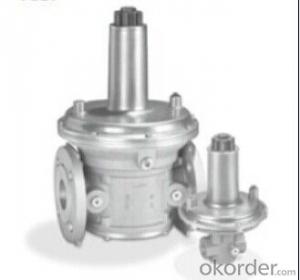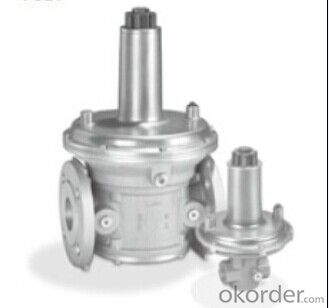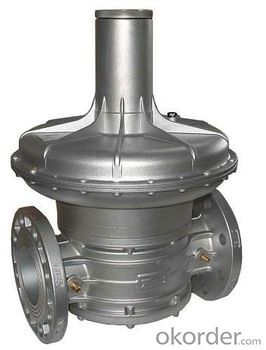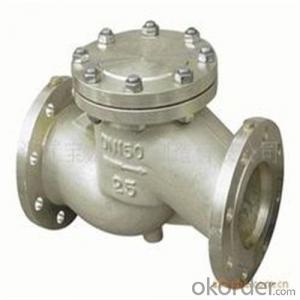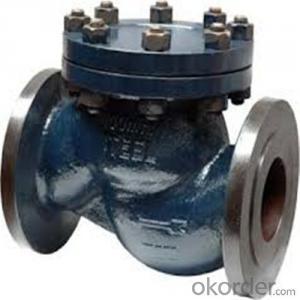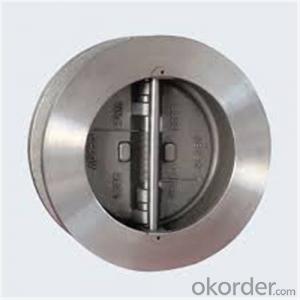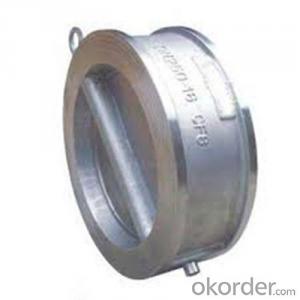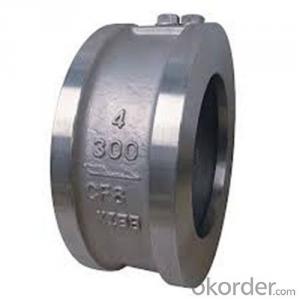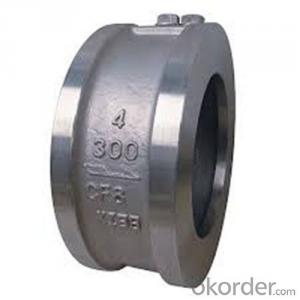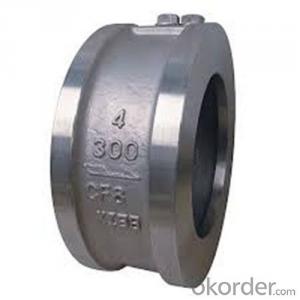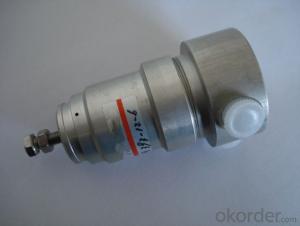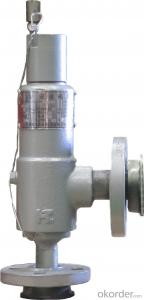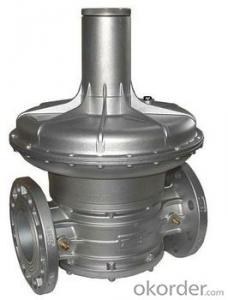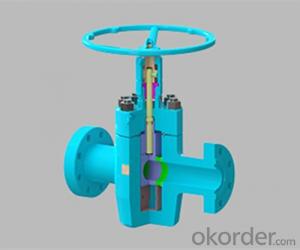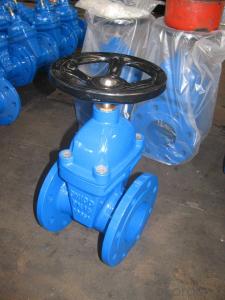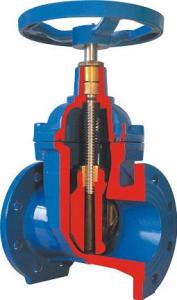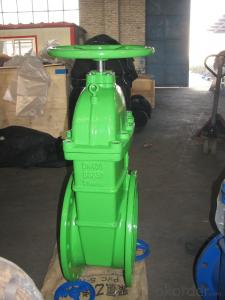Pressure Reducing Valve with good delivery time
- Loading Port:
- China Main Port
- Payment Terms:
- TT OR LC
- Min Order Qty:
- -
- Supply Capability:
- -
OKorder Service Pledge
Quality Product, Order Online Tracking, Timely Delivery
OKorder Financial Service
Credit Rating, Credit Services, Credit Purchasing
You Might Also Like
Specifications
Regulator for gaseous media, to be fitted to all types of gas
Optimum dimensioning allows high throughput performance
Application
VGBF regualtors are general purpose regualtors for controlling gas pressure to furnaces, ovens and other gas consuming equipment. They are suitable for nature, LP and clean biogas at inlet pressure up to 60psig (4bar). Springs are available to allow for a wide choice of outlet pressure.
Payment: TT / LC / DP
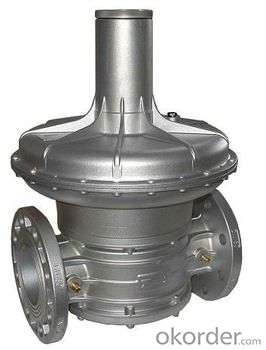

- Q: I just replaced my fill valve and all the other toilet components with a universal korky brand kit about 2 months ago and the fill valve is making a hissing sound once the water fills up in the tank. There are also air bubbles that come from the vents on top of the fill valve. I went to the Korky web site and they say that it is a faulty flapper but i checked to see if there is a leak by dropping one of those testers into the tank and there appears to be no leak. Any suggestions?
- Those valves are notorious for hissing. If it's too loud, turn the service valve down to cut pressure. They are adjustable, so be sure the valve is not filling the tank too close to the overflow. Next time, just use food coloring to test. One or two drops in the tank will do.
- Q: Hi....my boyfriend is currently waiting to have heart valve replacement surgery and im a little worried about the whole thing...he doesnt like talking about it but if someone knows the answer to my questions I'd be so greatful!!First of all a little detail....he is 19, as far as i know he was born with this problem with his valve but it has got worse over time. he was also born with a hole in his heart but had an operation as a baby to fix this. he gets short of breath and often has pains in his chest. he says hes going to have a pigs heart valve to replace his, by open heart surgery (in a few months time). my main worry is whether the operations are always successful? and will this condition/operation affect his life expectancy??please if there are any experts in the field help put my mind to rest....!thanksshelly x
- Open heart surgery is always a risk, as is any major surgery. The main risks are from infection and blood clots. The risks taper off very quickly within a few days after the surgery. Heart valve replacements are a common operation, with a high success rate. Life expectancy is generally better with a valve replacement; but not all valve problems reduce life expectancy to begin with. Sometimes the trade-offs are more of an issue with quality of life, with higher quality achieved with a functioning heart valve, so some people may be taking a medical risk to obtain higher quality of life. No one can tell you for certain what the outcome of this operation will be. The odds are very high that everything will go perfectly and he will fell better than ever before. There is a very small chance that he will end up worse To put the risks in perspective, a person i know had minor surgery to her knee - a simple 1 hour operation done at an outpatient clinic. Ten days later, a clot broke loose and she died in her sleep. I have had the same operation twice and didn't even miss more than a few hours of work. Another person i know had severe heart problems and docs said it was terminal, but an operation could prolong his life maybe 5-7 years. He had the operation and its now been almost 20 years and his cardiologist says his heart is healthy and there's no reason why he might not live another 20 years or more.
- Q: Can someone please help me on this anatomy question:Describe the physical similarities and differences in the structure of the AV valves and the semilunar valves.Thanks
- The two atrioventricular (AV) valves ensure blood flows from the atria to the ventricles, and not the other way. These are large, multicusped valves that prevent backflow from the ventricles into the atria during systole. They are anchored to the wall of the ventricle by chordae tendinae, that prevent the valve from inverting. The two semilunar (SL) valves are present in the arteries leaving the heart, and they prevent blood flowing back from the arteries into the ventricles. These are positioned on the pulmonary artery and the aorta. These valves do not have chordae tendinae, but are more similar to valves in veins.
- Q: Hi, I'm looking for asymmetrical two way valve needed in pipe line liquid product
- Valve company has been able to fulfill the requirements of its customers according to the highest standards, and always consider the customer satisfaction, so we would be grateful to receive their viewpoints and comments. So we also hope to contact us if they need further information, confirmation on any product. Please note that according to continually work on improving our products, all products materials, specification, dimensions, and etc. listed are subject to change without notice.
- Q: 1995 Yukon need valve lash adj- how and hat tools?
- remove valve covers, watch front left two lifters and turn engine, by bolt that holds harmonic dampener to front of crankshaft, so mark on dampener lines up with mark on front cover. If rocker arms do not move as marks line up engine should be on top dead center number 1 cylinder. Now you can adjust exhaust valves 1, 3, 4, 8 and intake valves 1, 2, 5, 7 [ odd numbers are on the left bank from the front 1,3,5,7 even on the right bank from the front 2,4,6,8]. Adjust by turning nut in rocker arm out until movement is felt than tighten until all movement is gone and tighten one turn more. After done with the first eight valves turn engine over one full turn till marks line up again. Then adjust exhaust valves 2,5,6,7 and intake valves 3,4,6,8 the same way.
- Q: I need to find a solenoid valve with the following specifications:2-way, 1 inch nozzles (both male)needs to be able to handle the pressure from a CO2 tank (~1000 psi)needs to work with 12vdc less than 10 ampsits either a solenoid, or some other type of valve which will release the CO2 when we tell it to electronically
- The leading maker of solenoid valves is ASCO. Their website is shown below. If a valve that fits your application exists they probably make one. If you can't find a suitable solenoid then you need to consider a pneumatic valve operated by a solenoid valve. That is a common solution for a problem like yours. As to the male connections. If they are not available then you can just use a pair of threaded fittings (pipe nipples) to change the configuration.
- Q: Could my subs kill my EGR valve? I replaced my O2 sensor and my check engine light didn't go off. So I had it checked again and the same problem was still there. It said that all the cylinders were running either rich or lean..... I can't remember. But I was told it could be the EGR Valve so I replaced it and for about a week the check engine light was off.Now its back on. Had it checked again and the same deal was going on. Oh there was also a low voltage reading..... which is why I'm thinking its my subs.So could it be my subs that keeps killing my EGR valve? And any solutions will be helpful. I don't want to have to replace my alternator because its in an extremely tough place to reach. And I already have a small Cap.... .5. My subs handle 600 RMS total. WOuld getting a bigger Cap help?
- next time state year/make/model/mileage. most egr valves operate via vacuum. your subs can't affect a vacuum operated egr valve. if the o2 sensor didn't help out, you probably have a bad vacuum hose somewhere. that will cause the system to go into havoc because the car computer can't compensate for the excessive air being sucked in. a cap does not help with anything except for a loud THUMP. the THUMP causes a voltage spike and stresses the charging system. the cap takes care of the thump safer, it's not a complete solution.
- Q: im 28yrs old with two babies.in my heart two valves are very tight and leaking too,im going for a transplanting them in august.If there is anybody who got this problem solved please share.Thanks in advance.
- Usually with an artificial valve, you'll need to be on a blood thinner for the rest of your life. If they use a natural valve, you usually won't need the blood thinner - perhaps you will for a little while, but not permanently. You can request a natural valve, but the surgeon doesn't know what size/shape of valve you need until he actually opens you up and sees what he's working with. He has an idea, based on the x-rays and MRIs you've had done, but he won't know for sure until he actually see it. So the surgeons are going to request that the Organ Procurement Department to thaw out two or three valves, depending on what they see in the tests. You can't just keep thawing out valaves, testing them, and then refreezing them if they aren't what you are looking for, so if they turn out to not be a good fit, he's going to turn to an artificial valve. So you could request a natural valve, but because of the shape of the gap that he needs to fill, you may have to have an artificial valve. Blood thinners scare people, and your friends will tell you horror stories about how their uncle's cousin's Nephew cut his arm and bled to death because he was on a blood thinner! That could happen, but it is very rare. What does happen is that you will have to go to your doctor once a month and have a blood test, and if your blood is too thin, you need to ease off on the blood thinning medication. Or if it is too thick, you need to take more. If you're blood is too thin, you'll bruise more easily - which might be embarrassing if the bruise can be seen. Blood thinners aren't as dangerous as they make them out to be, but they can be inconvenient!
- Q: We had a sprinkler zone that did not send much water to sprinkler heads. Checked the spring on the solenoid. We took off the top of the valve and rinsed gasket and parts below – put back together. The zone then worked. However I then noticed that the valve that does not shut off completely – water meter shows usage. I turn off water as it comes from the house.We then replaced the solenoid, the zone would not turn on. When back to the old solenoid. I switched wires at the timer and valve, it started, but when the cycle was through there still was water going through the system. Put wires back to their original locations.Space is crowded and looks tricky to replace valve. Would like advice on that for next year. However my main concern is when we shut down for the winter. We manually run each of the 8 stations and blow out the water. Will the bad valve cause a problem?
- You didn't mention who manufactured the valve. Sounds like you have a small stone caught between the valve body and the diaphragm. Diaphragms don't open that much and a large enough piece of debris can get caught. Also some valves are manufactured with a small tick screen that is inserted into the diaphragm itself. If it comes out then there will be a small hole in the diaphragm, causing leakage. Take the entire top off of the valve body and inspect the diaphragm. Be careful of the spring in the top. If it was a stone, you will see an indentation in the diaphragm. Feel around the seating edge to see if it is damaged. If all is OK, just put it back together, if not, take the diaphragm to a sprinkler place and get a new one.
- Q: I assembled my new gas grill, but I'm not sure if the burner pipes (aka venturi) are properly connected to the valves. My assembly matches the picture in the instruction manual, but I'm not sure if the seal is tight enough. How do I know? Do I attach the propane and test? I'm concerned about the safety of doing so. Thanks!
- The connection between the valves and the burner are always a loose fit on an average gas grill. The regulator controls the pressure of the propane between the tank and the valves. The valves control the flow of gas. The propane leaving the valve is forced through a tiny orifice as it exits. This tiny orifice serves two purposes. It increases the pressure and velocity of the escaping gas, which helps speed it in the right direction. This, in turn, sets up the venturi effect. The venturi effect is a fancy way of saying that the system, from the valves to the burner, is designed to pull in air. There are usually little rectangular shaped vents in the burner tubes located where the burner tube connects with the valve. These vents allow air to be drawn into the system in order to ensure that the propane has enough oxygen to obtain complete combustion. Too much air is better than not enough. The second purpose of the orifice in the valve is that it doesn't allow the flame to travel back down the line toward the tank. The orifice is to small to allow enough oxygen to be sucked in to the closed part of the system to support combustion. Very good safety feature. Plus, the propane exiting the valve, even on high, is so minimal that a roaring fire from just the flow from the valves is improbable, maybe impossible. Gas grills are safe. People are dangerous. The main thing is to make sure you see a flame somewhere within the first 2 to 3 seconds after turning the valves to on. If you don't see any flame after 2 to 3 seconds, turn the valves to off, give the grill a chance to air out. You can even fan it with a newspaper or something. You just want to ensure that you are never trying to light propane that has had a chance to build up and mix with oxygen. After airing the grill out, either figure out what the problem is or try lighting it again. They aren't that complicated. Go ahead and get that grill fired up. The kids are hungry. Hope this helped.
Send your message to us
Pressure Reducing Valve with good delivery time
- Loading Port:
- China Main Port
- Payment Terms:
- TT OR LC
- Min Order Qty:
- -
- Supply Capability:
- -
OKorder Service Pledge
Quality Product, Order Online Tracking, Timely Delivery
OKorder Financial Service
Credit Rating, Credit Services, Credit Purchasing
Similar products
Hot products
Hot Searches
Related keywords
